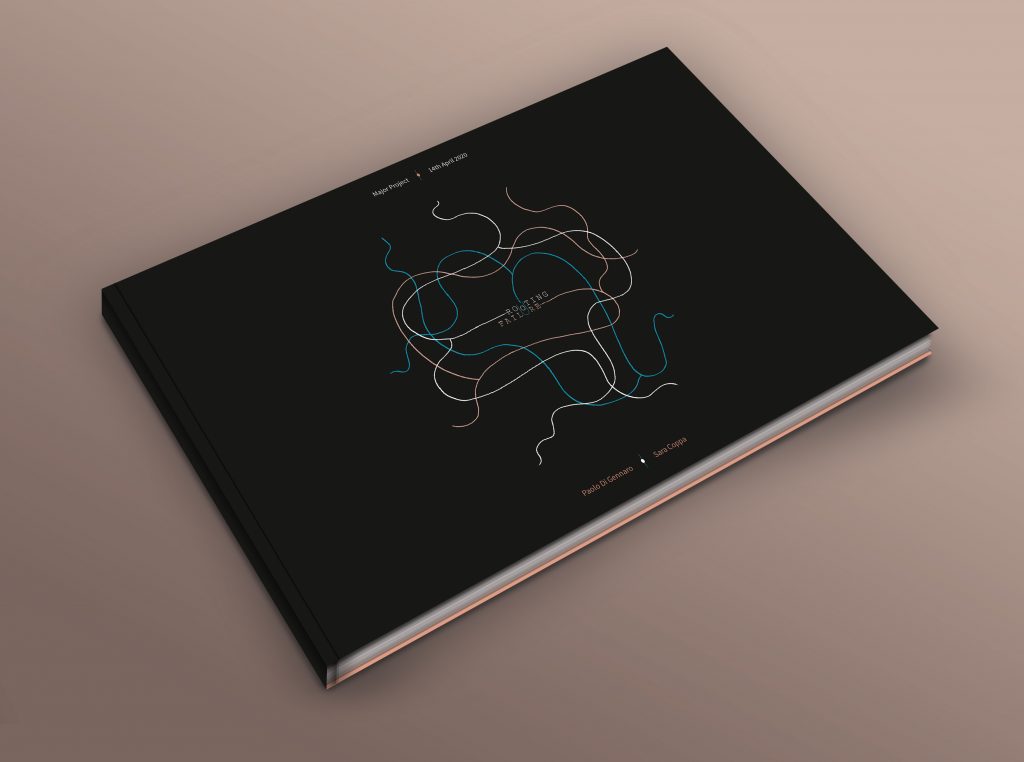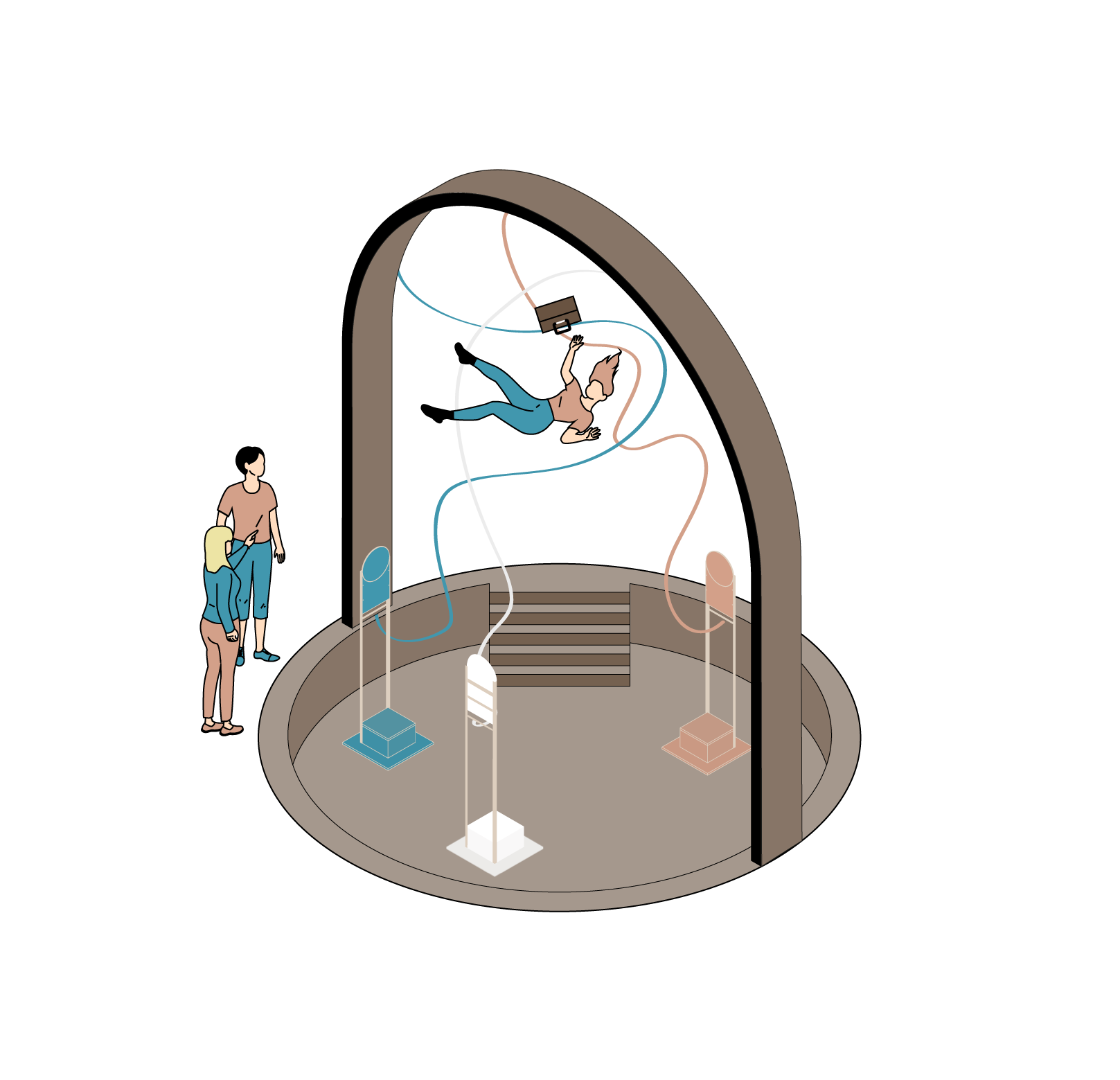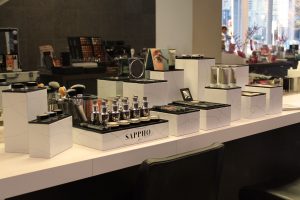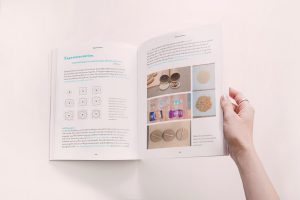Rooting FailureA participatory installation challenging the notion of failure.
Awarded with SPATIAL PRACTICES PRIZE 2020
UAL : Central Saint Martins
Featured on ARTS THREAD
Featured on CSM STORIES
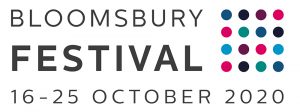
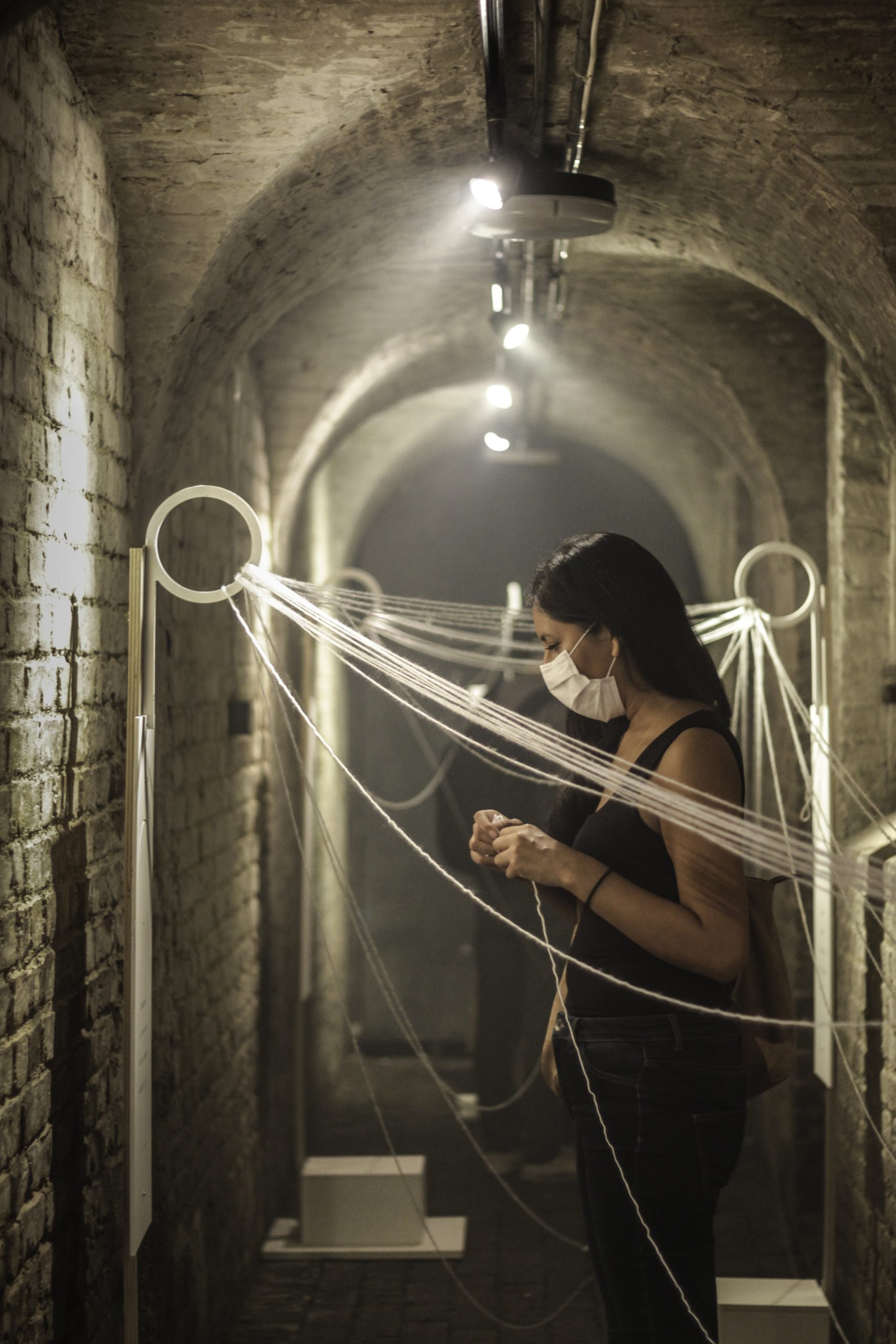
Inspired by Jules Verne’s Journey to the Centre of the Earth, Rooting Failure is an interactive installation challenging common understandings of failure. By taking a self-exploratory walk through the subterranean spaces of The Crypt Gallery in Bloomsbury, London, participants undergo a journey of recollection, discovery and revelation that examines the human tendency to hide disappointments, in the process demonstrating how sharing vulnerability fosters social empathy.
The burden of being continually successful especially confronts students and young workers aged under 30 years, who face expectations to comply with the ruling market-led demand for perfection.
The aim is to open up a conversation about failure in a time in which it is either unspeakable or subjected to the capitalistic imperative to dress the outcomes of all actions in the garb of success. In this way, failure, as an essential component of character development, may be de-stigmatised in a results-driven, fear-stricken society.
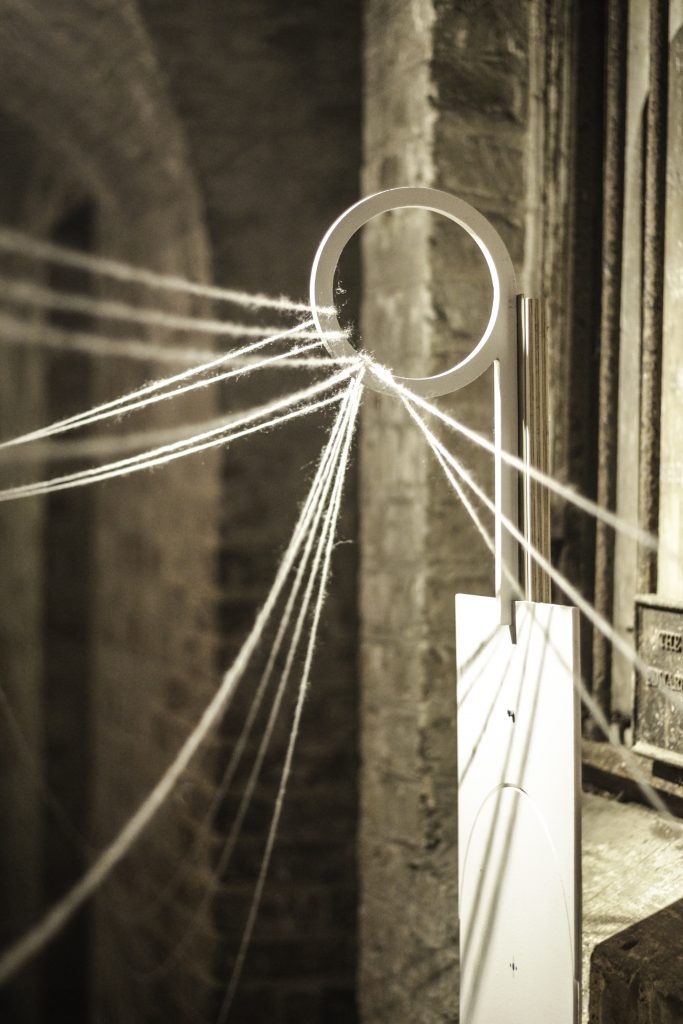
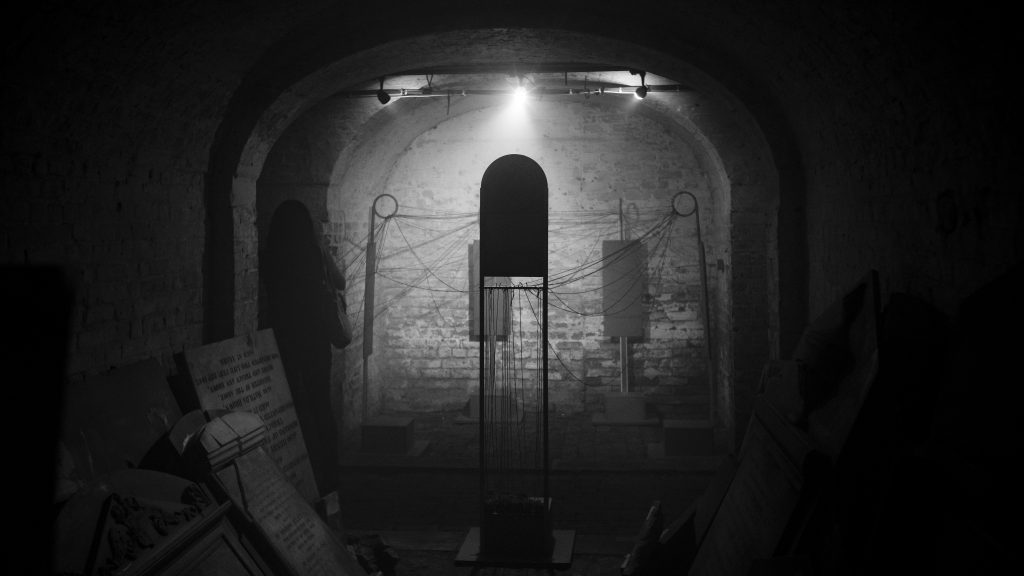
The project started as a critical reflection about how we represent ourselves in the digital and physical contemporary society aiming at always appearing successful and flawless. This has led to extensive research on sociological and psychological studies on the concept of failure and self-representation and social research on the perception of failure among people. Along the process I was driven by the goal of creating a design piece encouraging reflection that would unfold through a bodily experience that had a materiality in space.
Rooting Failure aims at combining intellectual reasoning with spatial interaction by creating an environment of acceptance of failure throughout a physical and emotional journey.
Rooting Failure is original in the blending of its fundamental traits, it deals with an intangible subject in a tangible experience where people are the protagonists interacting and modifying the space with their presence and connecting emotionally with it and the topic. The environment talks with a solemn tone of voice. It refuses the ironic take used by a large part of the analysed case studies and it tells a story of accepting failure, without focusing on what has to occur after it.
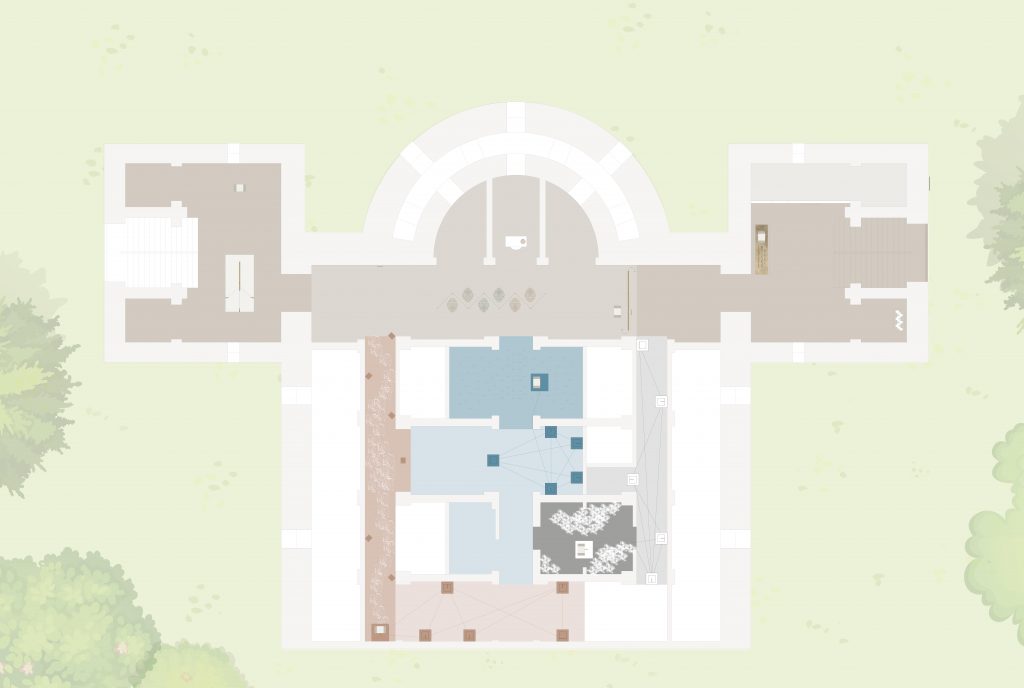
The concept development and its unfolding onto the space are based on different spatial and narrative theories.
The analysis of Freytag’s Pyramid allowed me to define the dramatic arc I wanted to achieve through narration. The identification of the five phases plus the inciting incident of the pyramid helped me to define the six stages of the experience and the relative intensity of emotions that I wanted to convey to those who experience it. Starting with the sequence of the moments, the desired emotions and their positioning in space was fundamental to define the details of each part in a consistent way. In the experience, the involvement of people grows in the central part of the crypt, with the threads’ interaction and the immersion in the three rooms symbolizing the feelings of failure, and reaches the maximum intensity in the Raft Room through the discovery of a new environment that promotes the acceptance of oneself and others.
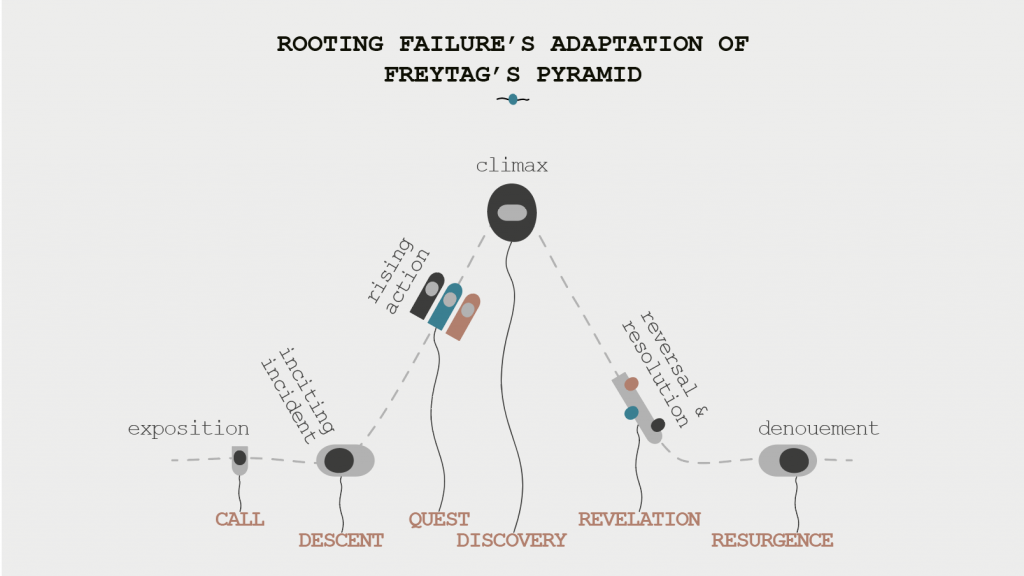
The study of the structure of Le Corbusier’s Architectural Promenade was fundamental in defining the narrative function of the crypt’s subspaces, making the path coherent in its development. People cross a threshold both narrative and physical, encountering the poster which initiates the narrative universe of Rooting Failure and crossing the door of the crypt to bodily immerse themselves in the phases of the experience. The elements in the entrance, which has the function of the vestibule, work as an introduction to space. The central action takes place in the corridors and chambers that have the function of the questioning, requiring people to make a physical and mental effort to cross them. In the Raft Room, reorientation takes place as physically turning around the poem written on the sail and discovering its double meaning creates a moment of reflection and openness to new visions. The culmination of the experience takes place in the Hallway through the written exchange of personal stories and opinions.
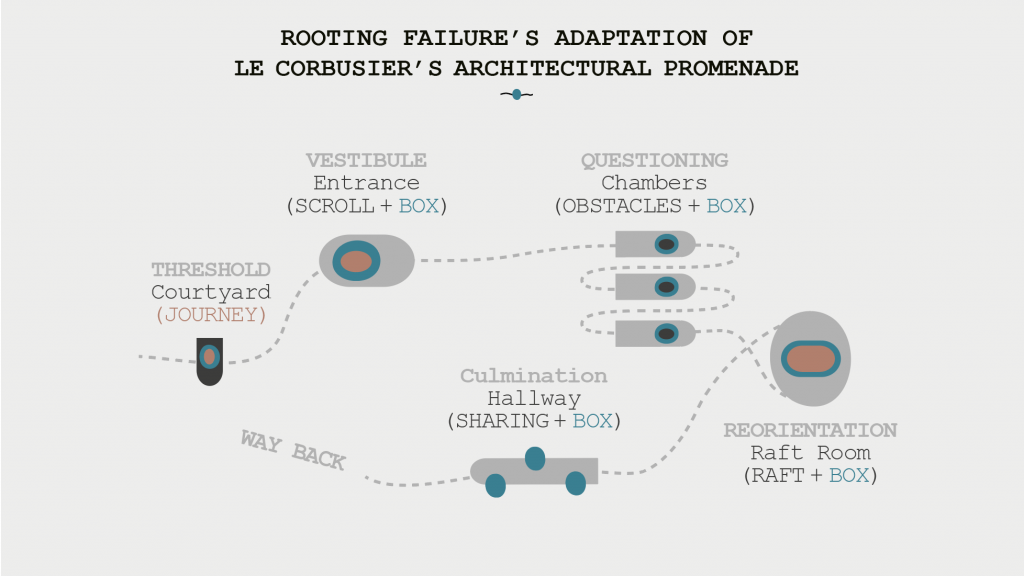
In the following videos you can see the user journey and the environments visualizations.
The following booklet contains an extensive analysis and explanation of the whole project:
